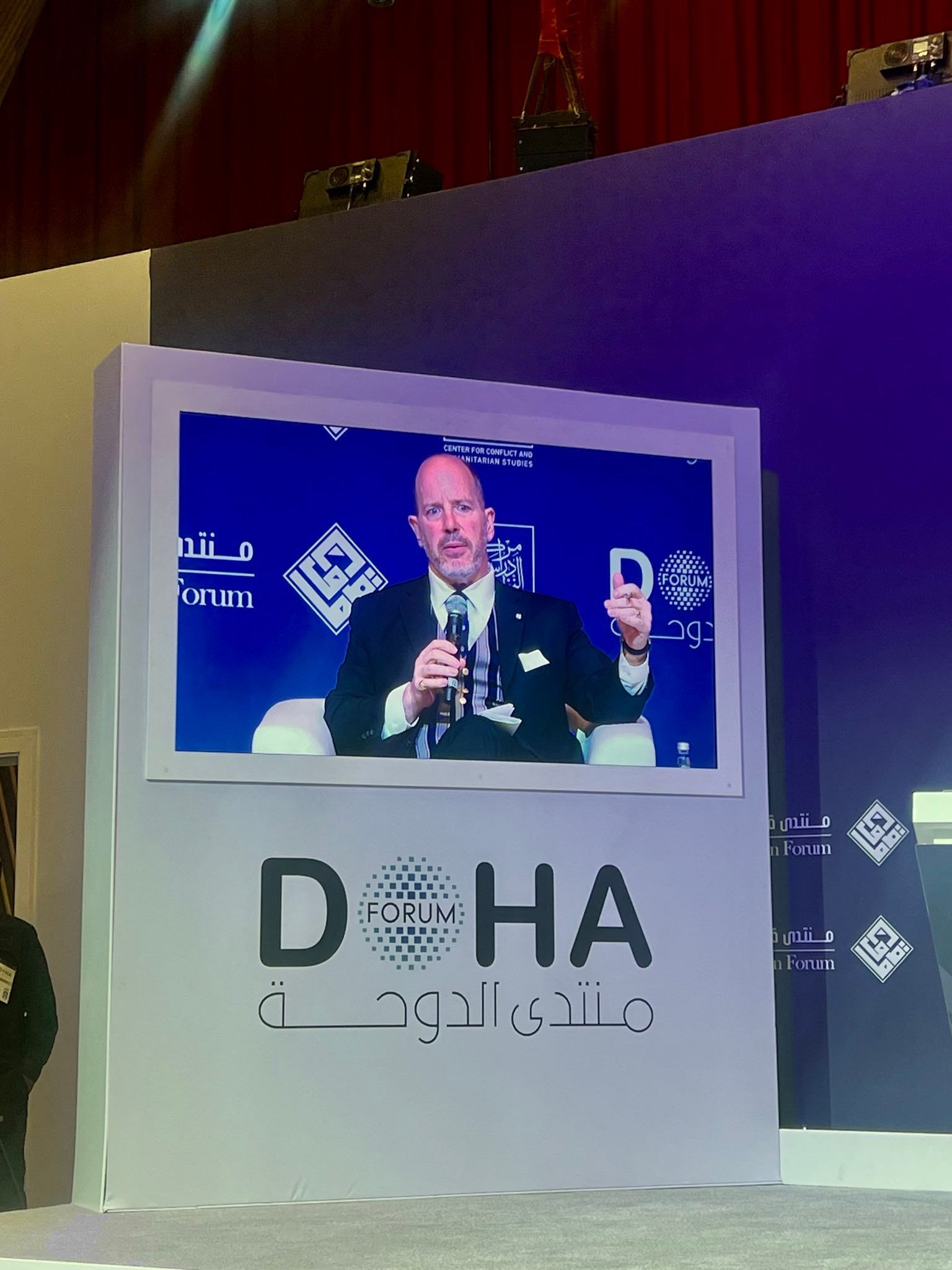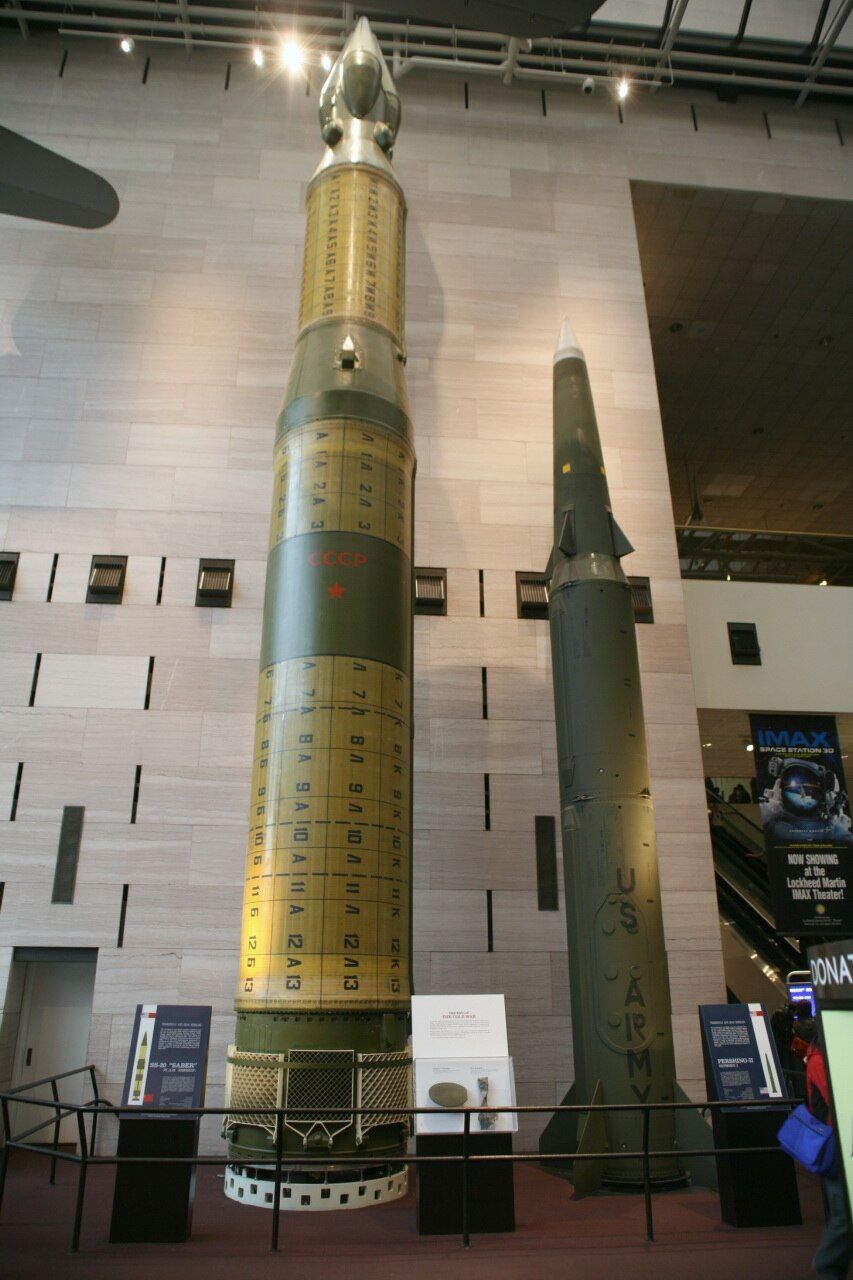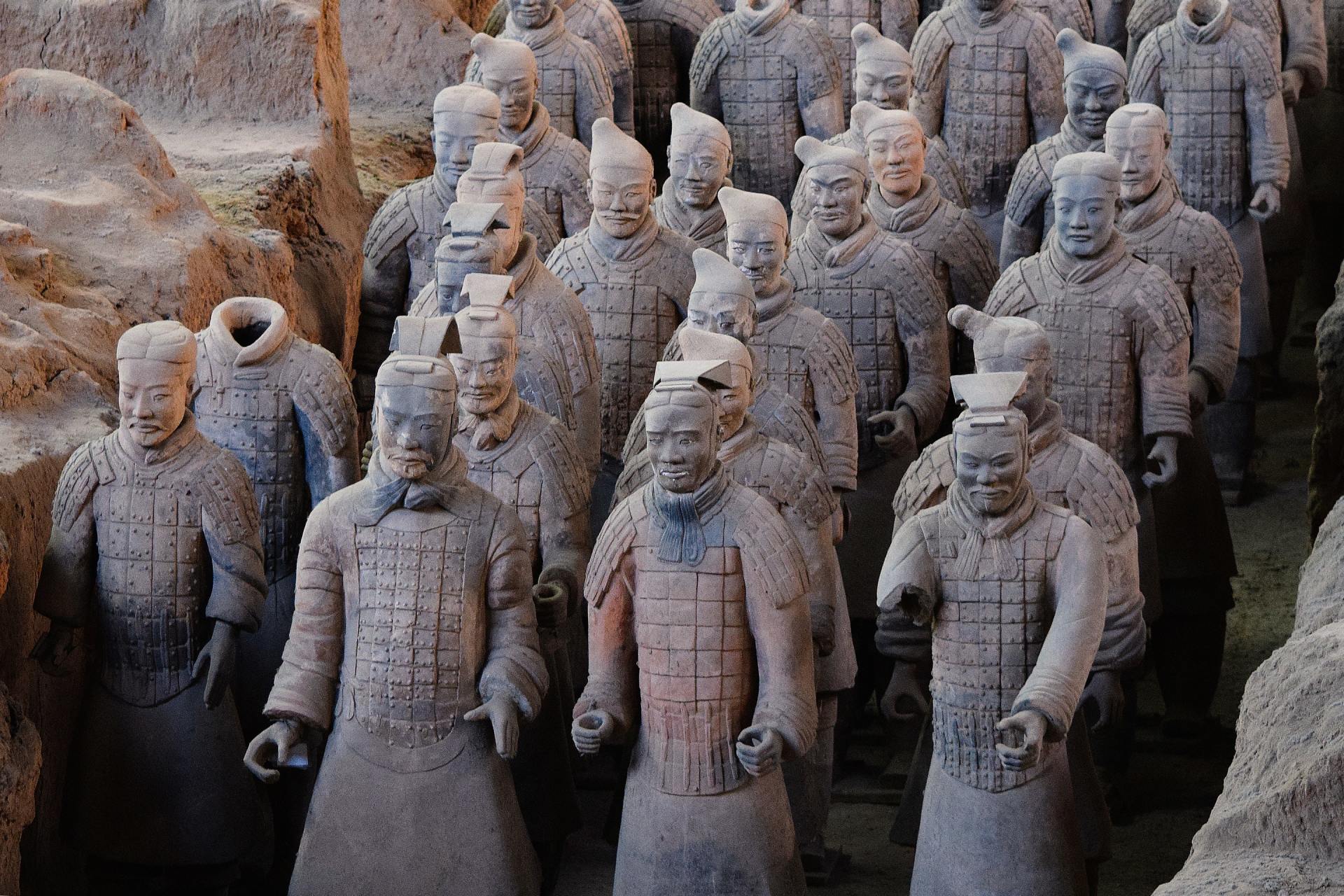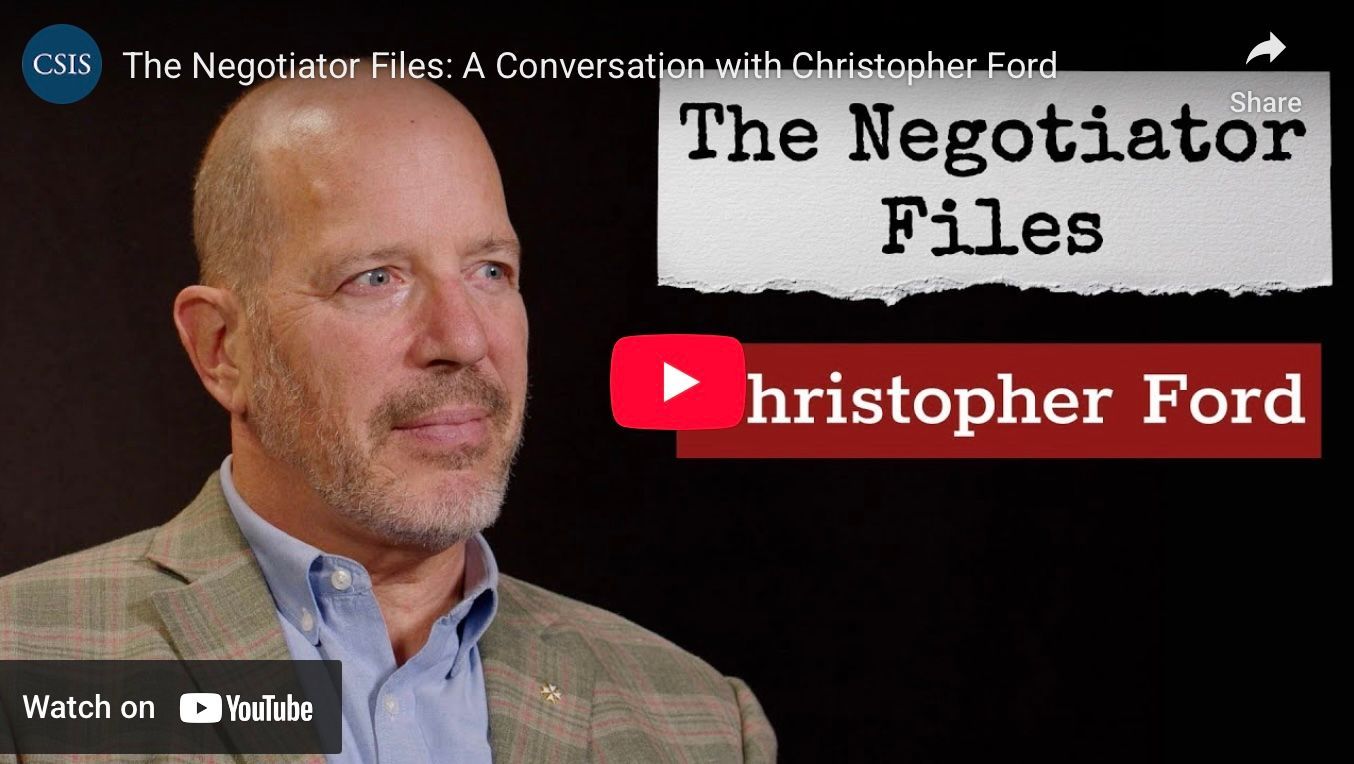Nuclear Doctrines and Prospects for P5 Dialogue
Below is the text upon which Dr. Ford based his remarks on February 18, 2025, to a Track 2 dialogue with Russia on Military Risk Reduction in Europe.
Thank you for inviting me to be here – and my apologies in advance for the background noise, as I’m attending a conference here in London this week. Also, please accept my condolences upon Sergey Rogov’s death. I did not really know him myself, but he was certainly a major name in the field, and to many of you an important and clearly beloved colleague. I am sure it is an exceedingly difficult loss.
On the topics at hand, I’d like to start by quickly summarizing my recommendations for U.S. nuclear doctrine and nuclear posture, and then address the prospects for P5 diplomacy. In that latter respect, I’ll say a word first about the idea of some kind of P5 declaration on “no-first-use” (NFU) policy, and then about the P5’s 2022 “nuclear war must never be fought” declaration. Finally, I’ll mention the other issue about which we’ve been asked today: Artificial Intelligence (AI) in nuclear decision-making.
U.S. Doctrine and Posture
Time being limited, I won’t spend too much time on my thoughts about what United States nuclear posture should be, since I have offered a number of specific recommendations on that topic elsewhere. But my comments on U.S. nuclear doctrine and posture may not be exactly what most of you in this audience wish to hear, but they proceed from the observation that we in the West have what is at least a threefold problem.
First, we must maintain a deterrence posture robust enough to deter aggression by Russa against us, our allies, or our interests at a time in which the Putin government has returned wars of conquest and annexation to the European agenda for the first time since Hitler was alive. And we have to do this while Russia – thanks in part to breaking its “Presidential Nuclear Initiatives” promises and violating the INF Treaty – is building up its shorter- and theater-range nuclear forces in ways we cannot presently match.
Second, China is now sprinting toward at least nuclear parity, thus confronting us in the near future with the challenge of deterring two hostile nuclear peer powers at the same time.
Third, China, Russia, Iran, and North Korea – all countries deeply hostile to the West and to rule-of-law democratic self-governance in general – are increasingly collaborating (and even forming alliances!) amongst themselves to reshape the international system in their own dark and lawless image.
In response to this, I thus argue the United States needs to do nine things with regard to nuclear weapons:
- Complete the now-underway recapitalization of U.S. strategic delivery systems and their associated command-and-control architectures;
- Develop a new conceptual framework for handling the unprecedented problem of deterring and dealing with two nuclear near-peer adversaries at the same time;
- Begin “uploading” warheads from the U.S. nuclear reserve stockpile onto operational delivery systems in modest numbers as soon as the New START agreement expires next year, to buy us a bit more time – in the face of China’s massive nuclear build-up – to find better answers to the “two-peer problem”;
- Conduct new research and development on new nuclear weapons design and delivery concepts;
- Augment U.S. and allied theater-range nuclear delivery options in response to long-deployed Russian and Chinese threats and coercive bargaining strategies;
- Develop and implement a plan to restore U.S. strategic forces’ ability to hold at risk hardened and deeply-buried underground targets;
- Make some specific tweaks to U.S. declaratory policy that I won’t bore you with here;
- Reinvigorate the U.S. nuclear weapons infrastructure to finally create the resilient and responsive complex we’ve talked about for years without building – which will also help us with strategic “hedging” as uploading draws down our existing reserve stockpile; and
- Relax our so-called “zero-yield” policy on very small nuclear explosive experiments in response to – and in order to permit us to conduct activities analogous to – those we understand Russia (and perhaps China) to have been conducting for some time.
I should emphasize that I’m not against – and actually support – trying to engage Russia and China on negotiated restraint before we’ve accomplished all these nine tasks I’ve just mentioned. I just doubt we’ll get any meaningful out of them until we’ve started to make real progress in bolstering deterrence through such steps.
Anyway, so much for my own recommendations to America. What about “no-first-use”?
No First Use
To my eye, a NFU declaration by the P5 would be at least useless, and perhaps even dangerous. As I have emphasized for years – beginning at least as early as 2011, continuing when I served in the First Trump Administration, and continuing to the present day – NFU is inherently implausible in just the kind of crisis in which it would seem to be needed most.
At the most charitable, NFU is a distraction that keeps us from talking about real issues. But worse, if a NFU promise by the United States were truly believed, it could undermine that U.S. extended nuclear deterrence that for decades has simultaneously helped prevent aggression and promoted nonproliferation by reassuring our allies that they do not themselves need nuclear weapons to deter Russia and China.
It’s worth remembering, also, that nobody currently actually has a real NFU policy in the first place, or perhaps ever has. China pretends to have an NFU policy, of course, but nobody believes them. Indeed, People’s Liberation Army (PLA) military publications contradict its diplomats’ bloviations on the topic – perhaps most obviously the 2004 PLA manual on The Science of Second Artillery Operations, which discusses using nuclear weapons in response merely to “strong conventional attacks.” The Chinese Communist Party has been lying to us for decades about China’s supposed commitment to “no first use,” so let us please stop wasting valuable time and energy on this sterile debate.
Nuclear War Declaration
So what about the P5 “nuclear war” declaration? Well, I’ll probably annoy this audience there as well.
For reasons similar to why I think NFU a foolish idea, I would also caution against too rigid an interpretation of the declaration made by the P5 under the Biden Administration that “a nuclear war cannot be won and must never be fought.” That statement may sound uncontroversial, even obvious, but that’s only if you don’t think about it too hard or read it too literally.
To be fair, of course, that was also phrasing upon which Ronald Reagan and Mikhail Gorbachev agreed many years ago. Nevertheless, too rigid a reading of that declaration could actually be strategically destabilizing.
This isn’t a new insight, but there needs to be at least some chance that you actually will use nuclear weapons in order for nuclear deterrence to work. If your adversaries believe you genuinely think your nuclear weapons literally “must never” be employed, those weapons won’t deter anybody.
If it were up to me – which it isn’t, of course – I’d clarify that this formulation represents our earnest hope that no nuclear exchange will ever occur, but that it does not in any way diminish our determination to use nuclear deterrence to protect ourselves, our vital interests, or our allies from aggression.
Such a clarification would seem quite commonsensical, I would hope, but if it’s indeed what the P5 really meant all along, why not offer this clarification? (If, on the other hand, clarifying clear and continued support for deterrence is controversial, then that P5 declaration is problematic.)
Artificial Intelligence
On the topic of AI in nuclear weapons decision-making, I’ll just repeat a point I made at a CSIS event last year:
“If there is any area in which national leaders would refuse to countenance handing over their own most existentially critical trigger-pulling authority to a computer, after all, [actual nuclear launch decision-making] is presumably it. In that sense, it may be that AI-type applications are more likely to take over human functionality, if they do at all, in areas merely supporting nuclear weapons release authority – such as time-urgent indications-and-warning (I&W) analysis, battle management decision-support tools, or other data-management and modeling applications supporting nuclear deterrence, war fighting, and force posture planning – than in the weapons-release decision itself.”
It’s worth remembering, of course, that Russia apparently still maintains its creepy and apocalyptic automated Perimeter(a.k.a. “Dead Hand”) system – which is basically a crude AI system that, if it is activated and certain decision criteria are met, will launch all Russian nuclear weapons. Perhaps prohibiting
that Russian system is a topic to discuss among the P5?
Beyond Perimeter, however, I think the main AI questions with nuclear decision-making go primarily to the issue of how to keep AI decision support to humans from bleeding over into decision-dependence by humans as we try to ensure that there is a “person in the loop” at all times.
Conclusion: Strategic Stability in P5 Dialogue
One potential benefit of Trump-style disruptions of the status quo is that they can sometimes offer an opportunity to go back to first principles and re-think some of the lazier habits and more shopworn conventional wisdoms we may have inherited from our predecessors.
In the context of P5 diplomacy, that may mean dropping the charade that all five of the nuclear powers perceive themselves to have a shared interest in strategic stability. They clearly don’t. In fact, two of those powers – most obviously Russia, but to some extent China as well – make strategic instability an essential element of their grand strategy, for they seek not to stabilize but rather to upend and reorder the existing international system for their own benefit. (That what it means to call them revisionists, after all, as we did in the First Trump Administration’s National Security Strategy in 2017.)
Accordingly, an honest P5 discussion on nuclear doctrine would focus directly upon the damage to global security being done by the Russian (and to a lesser extent Chinese) strategies of nuclear weapons-facilitated strategic coercion in support of territorial aggression. By way of tempering expectations about such diplomacy, moreover, candor requires that we consider the possibility that Moscow and Beijing simply don’t want the kind of stability-focused risk-reduction engagement that we in the West have consistently sought with them. (Worse, they may use such dialogue – or the prospect of it – to distract, dissuade, and delay us, so that we fail to take the steps needed to respond to their threats to restore strategic stability.)
As I have said many times, the path back to negotiated nuclear restraint between the United States, Russia, and China most likely runs through a robust countervailing nuclear posture by the United States and its allies. Only such an approach is likely to persuade Moscow and Beijing that they have an interest in serious negotiations with us.
Notwithstanding the happy slogans he might have agreed upon with Gorbachev, President Reagan understood this in his bones. We need to remember it today ourselves.
Thank you.
—Christopher Ford









